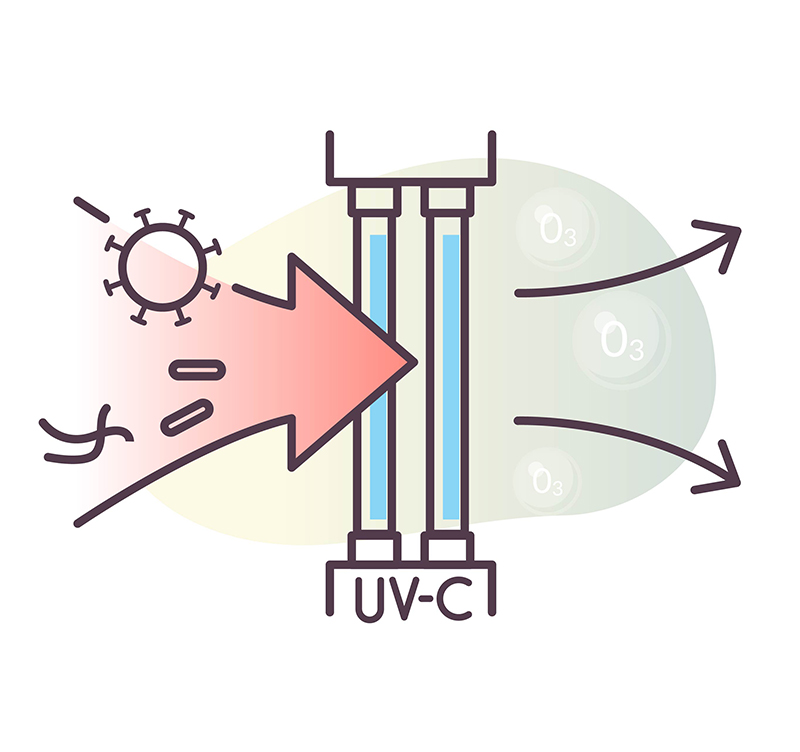Ultraviolet-C, or UV-C for short, is electromagnetic radiation with a wavelength smaller than visible light but larger than X-rays, in the range between 200-280 nm. This radiation has a germicidal effect: micro-organisms (viruses, bacteria, moulds) exposed to UV-C light become inactive within seconds.
The purifying effect of UV-C light is based on a photochemical process. UV light destroys the DNA of viruses and bacteria, thus preventing them from reproducing. It also damages other cellular components, effectively destroying these micro-organisms. The effectiveness of UV-C depends directly on its intensity and the time of exposure.
UV-C radiation is most effective in killing viruses and bacteria at 264nm.
The light from UV-C lamps is emitted at 253.7 nm, which is very close to its peak (264 nm) and is the most destructive to micro-organisms. UV-C lamps are therefore excellent for cleaning liquids, surfaces and air.

